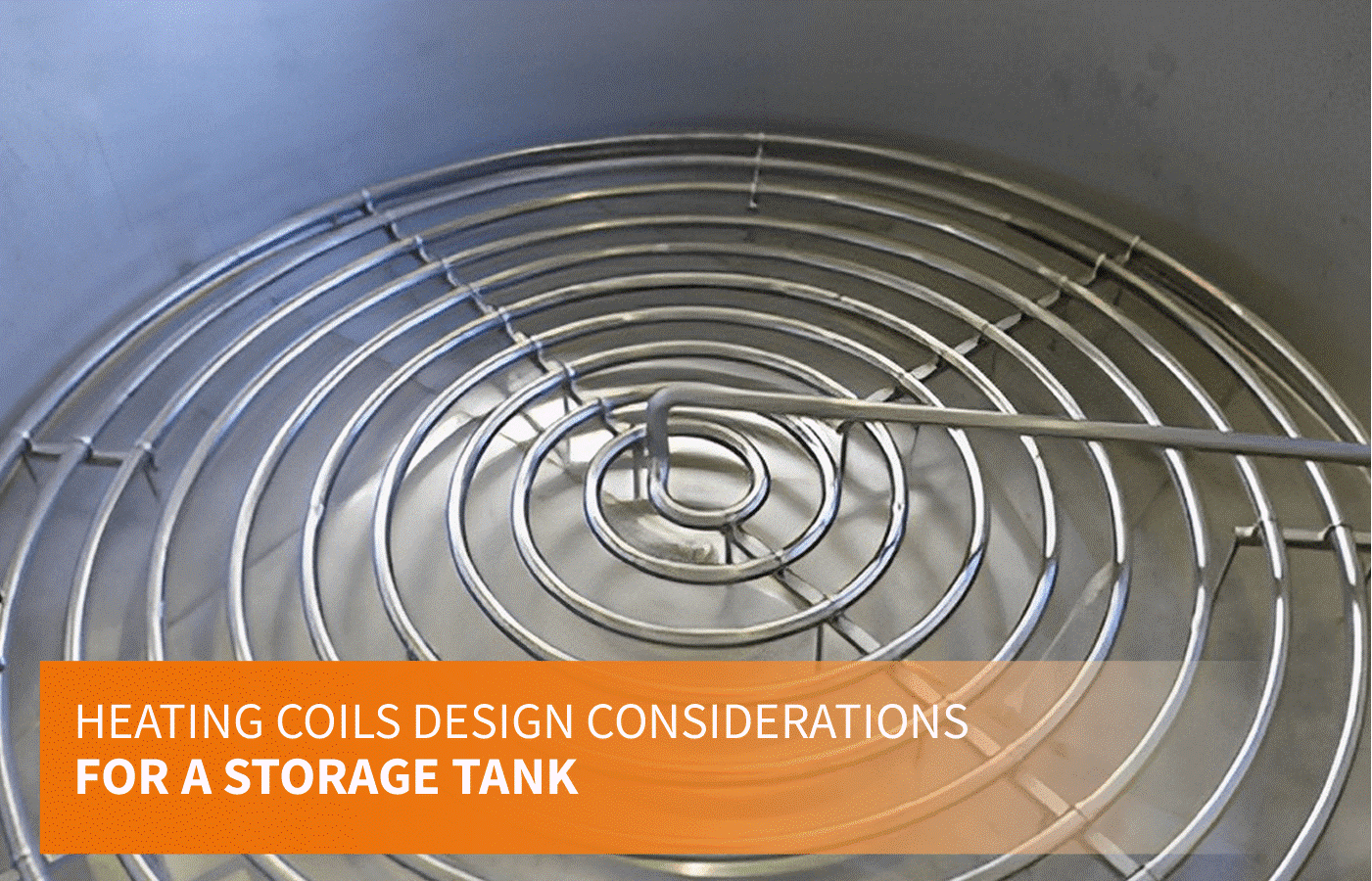Heating Coils Design Considerations for a Storage Tank

When designing and choosing internal heating coils for storage tanks, there are several things to consider. Heating coil calculation techniques can help in determining the requirements for the heating system.
When designing heating coils for storage tanks, it's essential to consider the size of the tank, how much heat needs to be transferred, the properties of the fluid stored, the material used, how it will be installed, and how it will be maintained.
The design should be based on aspects such as the required heating rate, temperature, and fluid properties, and ensure that heat is spread around the tank evenly.
Heating coils are a crucial part of heating systems for storage tanks. The right design can improve the system's effectiveness and reduce operating costs. The following are the main aspects to take into account while building heating coils for storage tanks and crucial things to remember.
Heating Coils Design Considerations:
1 Tank Size and Shape:
- The size and shape of the tank significantly impact the design of the heating coil. The coil should be designed to fit the tank's dimensions to ensure an even heat distribution across the tank. For even heating, a long, narrow tank may need numerous coils.
2 Heat Transfer Requirements:
- The coil should be made based on your desired heating rate and temperature. It's also essential to consider the fluid's heat transfer coefficient as it passes through the coil.
3 Fluid properties:
- The viscosity, density, and specific heat capacity of the fluid can impact the flow rate and pressure drop of the fluid, which can affect the system's performance.
4 Coil Material:
- Consider the fluid's corrosiveness, operating temperature, and the system's pressure when selecting the coil material.
5 Installation and Maintenance:
- When designing the heating coil, the designer should make installation and maintenance as easy as possible. The design should make it easy to maintain, clean, and replace the coil if damaged.
Heating Coil Design- Calculation Considerations:
1 Heat Transfer Coefficient (HTC):
- The HTC is a measure of the efficiency with which heat is transferred from the heating coil to the fluid in the tank. The HTC must be calculated accurately to ensure that the system is built to meet the intended heating rate and temperature.
2 Fluid Flow Rate:
- A crucial factor in determining how well the system works is the fluid flow rate through the heating coil. Inadequate flow rates can result in ineffective heating, while excessive flow rates can cause pressure drop and inefficient functioning.
3 Coil Sizing:
- The tank's dimensions, intended heating rate, and heat transfer coefficient should all be considered when determining the heating coil's size. To get the best possible heat distribution and efficiency, coil sizing entails picking the suitable diameter, length, and number of coils.
4 Material selection:
- The material should be durable and able to tolerate the fluid's corrosive properties and thermal stress.
5 Safety Factors:
- The sizing of safety components such relief valves, pressure gauges, and temperature sensors should be taken into consideration to ensure the system operates safely.
- In conclusion, accurate calculations for heating coil design must consider a wide range of variables, including heat transfer coefficients, fluid flow rates, coil sizing, material choices, and safety considerations. The heating system's practical, secure, and dependable operation can be supported by carefully considering these variables.
- When designing internal heating coils for storage tanks, use the PMT TANK Module Process. PMT Tank storage tank design software provides the user with various options for doing this calculation. Reach out to us for a free demo at info@pmechtech.com or Signup for free demo!
